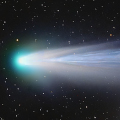
|
It brightened up to 3.7 mag in late October (Oct. 26, Juan Jose Gonzalez). Now it is 5.2 mag (Nov. 15, Yoshimi Nagai). It will fade out rapidly after this. It stays extremely low in the Northern Hemisphere. In the Southern Hemisphere, it is not observable now, but it will appear in December.
Date(TT) R.A. (2000) Decl. Delta r Elong. m1 Best Time(A, h)
Nov. 15 17 7.18 -16 38.4 1.243 0.551 25 5.1 18:22 ( 66, 4)
Nov. 22 17 11.52 -22 9.8 1.455 0.615 19 6.2 18:19 ( 65, -4)
|
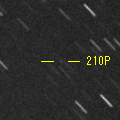
|
Brightened rapidly. It is visible at 10-11 mag in SWAN images (Nov. 5, Vladimir Bezugly). Now it is 11.7 mag (Oct. 30, Martin Masek). It will fade out rapidly after this. Now it is not observable. It will appear soon in the Northern Hemisphere, or in December in the Southern Hemisphere.
Date(TT) R.A. (2000) Decl. Delta r Elong. m1 Best Time(A, h)
Nov. 15 15 3.91 -25 49.2 0.447 0.550 8 8.4 5:07 (289,-19)
Nov. 22 14 31.97 -18 4.6 0.515 0.525 18 8.4 5:12 (291, -2)
|
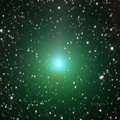
|
It brightened up to 5.2 mag in October (Oct. 11, Virgilio Gonano). Now it is 10.2 mag (Nov. 15, Yoshimi Nagai). Fading rapidly. In the Northern Hemisphere, it stays observable in good condition. In the Southern Hemisphere, it will be getting lower gradually.
Date(TT) R.A. (2000) Decl. Delta r Elong. m1 Best Time(A, h)
Nov. 15 23 20.53 4 48.3 0.621 1.407 119 9.8 19:44 ( 0, 60)
Nov. 22 23 44.17 6 29.1 0.771 1.520 119 10.7 19:40 ( 0, 62)
|

|
It is expected to brighten up to 5 mag in January. Now it is 12.6 mag (Oct. 21, Taras Prystavski). It will brighten rapidly after this. In the Northern Hemisphere, it will be unobservable in December. But it will be observable again in February. In the Southern Hemisphere, it is not observable now, but it will appear in January.
Date(TT) R.A. (2000) Decl. Delta r Elong. m1 Best Time(A, h)
Nov. 15 17 9.61 1 14.6 2.176 1.454 33 10.3 18:22 ( 81, 15)
Nov. 22 17 22.13 -2 20.9 2.123 1.343 28 9.9 18:19 ( 79, 10)
|
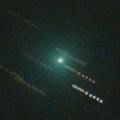
|
Bright new comet. Now it is 9.7 mag (Nov. 15, Osamu Miyazaki). It will turn to fade out rapidly after the peak. In the Northern Hemisphere, it will be getting lower gradually after this, and it will be unobservable in January. In the Southern Hemisphere, it is not observable now, but it will appear in March.
Date(TT) R.A. (2000) Decl. Delta r Elong. m1 Best Time(A, h)
Nov. 15 17 13.85 45 53.6 1.024 1.144 69 10.2 18:22 (124, 37)
Nov. 22 18 16.78 36 21.0 1.061 1.121 66 10.1 18:19 (110, 41)
|

|
Now it is 9.5 mag (Nov. 13, Osamu Miyazaki). It will fade out rapidly after this. It will be fainter than 18 mag in February. In the Northern Hemisphere, it stays observable in good condition. In the Southern Hemisphere, it is not observable now, but it will appear in December. The nucleus is split into three components.
Date(TT) R.A. (2000) Decl. Delta r Elong. m1 Best Time(A, h)
Nov. 15 11 9.09 29 18.9 0.504 1.005 77 10.2 5:07 (271, 58)
Nov. 22 10 21.87 53 18.6 0.410 1.142 101 10.3 5:12 (209, 69)
|

|
Bright new comet. It brightened up to 10.4 mag in early November (Nov. 4, Michael Jager and Gerald Rhemann). However, it faded out very rapidly afer that. Now it is 14.0 mag (Nov. 8, Michael Jager). It will fade out rapidly after this. It will be fainter than 18 mag in January. In the Northern Hemisphere, it will be unobservable soon. In the Southern Hemisphere, it will never be observable after this.
Date(TT) R.A. (2000) Decl. Delta r Elong. m1 Best Time(A, h)
Nov. 15 15 1.98 6 53.6 0.714 0.464 25 10.4 5:07 (262, 0)
Nov. 22 16 30.64 7 23.8 0.873 0.483 29 11.0 18:19 ( 95, 6)
|
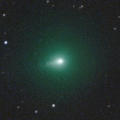
|
Third interstellar object in history following 1I/'Oumuamua and 2I/Borisov. The eccentricity is extremely big as 6. It approached to Sun down to 1.38 a.u. in late October. Now it is 9.1 mag (Nov. 8, Michael Jager). It will fade out rapidly after this. It will be fainter than 18 mag in February. It will be getting higher gradually.
Date(TT) R.A. (2000) Decl. Delta r Elong. m1 Best Time(A, h)
Nov. 15 12 50.87 -3 48.6 2.110 1.484 39 10.9 5:07 (290, 20)
Nov. 22 12 31.18 -2 7.5 2.020 1.605 51 11.2 5:12 (299, 31)
|
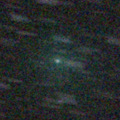
|
It will brighten up to 8 mag in winter, and will be observable in good condition. Now it is 12.4 mag (Nov. 15, Martin Masek). Brightening rapidly. In the Northern Hemisphere, it stays observable in good condition. It locates somewhat low in the Southern Hemisphere. But it will become high in winter.
Date(TT) R.A. (2000) Decl. Delta r Elong. m1 Best Time(A, h)
Nov. 15 9 4.31 20 8.4 0.807 1.380 99 11.8 5:07 (341, 74)
Nov. 22 9 35.50 19 54.2 0.747 1.337 99 11.0 5:12 (343, 74)
|
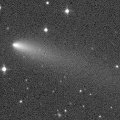
|
Now it is 12.6 mag (Nov. 10, Yoshiaki Yamaguchi). Fading slowly. It stays observable in good condition. A 19-mag fragment was found on Oct. 3.
Date(TT) R.A. (2000) Decl. Delta r Elong. m1 Best Time(A, h)
Nov. 15 3 55.38 4 40.3 1.172 2.140 163 12.1 0:21 ( 0, 60)
Nov. 22 3 47.97 6 6.0 1.161 2.133 166 12.1 23:41 ( 0, 61)
|

|
Now it is 13.5 mag (Nov. 10, Yukihiro Sugiyama). Fading slowly. In the Northern Hemisphere, it stays observable in good condition. It locates somewhat low in the Southern Hemisphere.
Date(TT) R.A. (2000) Decl. Delta r Elong. m1 Best Time(A, h)
Nov. 15 3 23.91 26 10.4 2.955 3.938 172 13.3 23:45 ( 0, 81)
Nov. 22 3 20.86 25 57.5 2.974 3.953 171 13.3 23:14 ( 0, 81)
|

|
It became brighter than expected. Now it is 13.7 mag (Nov. 11, Ken-ichi Kadota). It stays 13 mag for a while. It locates somewhat low. But it will become high in spring in the Northern Hemisphere, or in winter in the Southern Hemisphere.
Date(TT) R.A. (2000) Decl. Delta r Elong. m1 Best Time(A, h)
Nov. 15 12 49.17 -8 26.4 2.685 2.001 38 13.7 5:07 (294, 17)
Nov. 22 13 4.96 -9 44.8 2.631 1.993 40 13.6 5:12 (298, 20)
|

|
Now it is 17.7 mag (July 24, Thomas Lehmann). It will brighten rapidly after this. Now it is not observable. It will appear in January in the Southern Hemisphere, or in December in the Northern Hemisphere.
Date(TT) R.A. (2000) Decl. Delta r Elong. m1 Best Time(A, h)
Nov. 15 14 38.95 -14 25.6 2.836 1.874 10 14.0 5:07 (282, -7)
Nov. 22 14 56.38 -15 52.8 2.776 1.829 13 13.7 5:12 (286, -5)
|
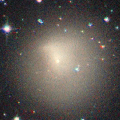
|
Now it is 15.7 mag (Oct. 28, Francois Kugel). In the Northern Hemisphere, it stays observable in good condition. In the Southern Hemisphere, it will be getting higher gradually.
Date(TT) R.A. (2000) Decl. Delta r Elong. m1 Best Time(A, h)
Nov. 15 11 22.56 -0 58.6 6.724 6.301 60 14.1 5:07 (305, 38)
Nov. 22 11 25.47 -1 25.7 6.622 6.302 67 14.1 5:12 (313, 43)
|
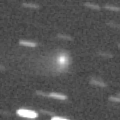
|
It is expected to brighten up to 13 mag in early summer in 2026. Now it is 14.8 mag (Oct. 10, J. Tapioles). It stays 14 mag for a while. In the Northern Hemisphere, it will be unobservable temporarily in January. In the Southern Hemisphere, it will be unobservable in December. But it will be observable again in February.
Date(TT) R.A. (2000) Decl. Delta r Elong. m1 Best Time(A, h)
Nov. 15 19 12.71 2 44.4 4.200 3.818 60 14.4 18:22 ( 60, 40)
Nov. 22 19 12.74 1 46.9 4.286 3.796 54 14.5 18:19 ( 64, 34)
|
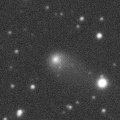
|
Now it is 14.9 mag (Oct. 17, Ken-ichi Kadota). It stays 14 mag for a while. In the Northern Hemisphere, it stays observable in good condition. It locates somewhat low in the Southern Hemisphere.
Date(TT) R.A. (2000) Decl. Delta r Elong. m1 Best Time(A, h)
Nov. 15 9 21.08 20 23.9 5.302 5.497 96 14.5 5:07 (327, 73)
Nov. 22 9 23.41 20 49.3 5.197 5.501 102 14.5 5:12 (353, 76)
|

|
Now it is 14.4 mag (Oct. 11, Hiroshi Abe). It stays 15 mag for a while. In the Northern Hemisphere, it will be unobservable temporarily in December. In the Southern Hemisphere, it is not observable now, but it will appear in January.
Date(TT) R.A. (2000) Decl. Delta r Elong. m1 Best Time(A, h)
Nov. 15 16 12.41 -1 12.5 6.872 5.962 21 14.7 18:22 ( 87, 2)
Nov. 22 16 18.13 -1 7.4 6.908 5.990 20 14.7 18:19 ( 90, -2)
|
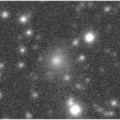
|
It will brighten up to 13 mag in 2026. Now it is 15.3 mag (Nov. 1, Alfons Diepvens). It stays 15 mag for a while. It will be unobservable in December. But it will be observable again in January in the Northern Hemisphere, or in February in the Southern Hemisphere.
Date(TT) R.A. (2000) Decl. Delta r Elong. m1 Best Time(A, h)
Nov. 15 18 44.41 -8 27.9 5.592 5.020 50 14.9 18:22 ( 56, 27)
Nov. 22 18 48.19 -7 57.5 5.635 4.984 44 14.9 18:19 ( 61, 23)
|
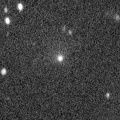
|
Very large comet. It is expected to brighten up to 13 mag in 2031. Now it is 14.9 mag (Nov. 12, Andrew Pearce). It stays 15 mag for a while. In the Northern Hemisphere, it is not observable now. In the Southern Hemisphere, it stays observable in good condition. In the Northern Hemisphere, it is not observable until 2030.
Date(TT) R.A. (2000) Decl. Delta r Elong. m1 Best Time(A, h)
Nov. 15 5 31.78 -74 17.8 14.601 14.547 84 14.9 1:55 ( 0,-19)
Nov. 22 5 27.62 -74 33.2 14.593 14.525 84 14.9 1:23 ( 0,-20)
|
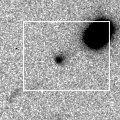
|
It is expected to brighten up to 13.5 mag and to be observable in good condition in 2026 spring. Now it is 16.8 mag (Aug. 12, ATLAS South Africa). Brightening slowly. In the Northern Hemisphere, it is not observable now, but it will appear in December. It locates somewhat low in the Southern Hemisphere. But it will become high in winter.
Date(TT) R.A. (2000) Decl. Delta r Elong. m1 Best Time(A, h)
Nov. 15 14 47.63 -49 14.0 2.618 1.849 31 15.3 5:07 (313,-27)
Nov. 22 14 58.47 -47 29.1 2.609 1.813 29 15.2 5:12 (313,-22)
|
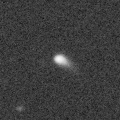
|
Now it is 14.8 mag (Nov. 10, ATLAS Chile). It stays 15 mag for a while. It stays extremely low in the Northern Hemisphere. But it will become high in autumn. In the Southern Hemisphere, it stays observable in good condition. It is expected to brighten up to 12 mag in winter between 2026 and 2027.
Date(TT) R.A. (2000) Decl. Delta r Elong. m1 Best Time(A, h)
Nov. 15 2 56.52 -45 53.6 5.429 5.923 115 15.3 23:17 ( 0, 9)
Nov. 22 2 52.22 -45 33.3 5.423 5.881 113 15.3 22:45 ( 0, 10)
|

|
It will brighten up to 12 mag in 2026 summer. Now it is 16.0 mag (Nov. 1, Andrew Pearce). Brightening slowly. It will be getting lower gradually after this, and it will be unobservable in January in the Southern Hemisphere, or in February in the Northern Hemisphere.
Date(TT) R.A. (2000) Decl. Delta r Elong. m1 Best Time(A, h)
Nov. 15 20 27.77 -13 33.8 2.749 2.644 73 15.6 18:22 ( 28, 37)
Nov. 22 20 36.51 -13 17.0 2.806 2.612 68 15.5 18:19 ( 33, 36)
|
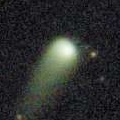
|
It was observed at 12-13 mag for a long time in 2024. Now it is 14.8 mag (Oct. 28, Alfons Diepvens). Fading slowly. In the Northern Hemisphere, it stays observable in good condition. In the Southern Hemisphere, it will be unobservable in December.
Date(TT) R.A. (2000) Decl. Delta r Elong. m1 Best Time(A, h)
Nov. 15 22 32.74 41 21.5 4.707 5.209 115 15.5 18:54 (180, 84)
Nov. 22 22 29.84 39 35.4 4.827 5.250 110 15.6 18:24 (180, 85)
|

|
It brightened up to 12.7 mag in 2024 summer (Aug. 7, 2024, Thomas Lehmann). Now it is 16.7 mag (Nov. 11, ATLAS-MLO, Mauna Loa). Fading slowly. In the Northern Hemisphere, it stays observable in good condition. In the Southern Hemisphere, it will never be observable after this.
Date(TT) R.A. (2000) Decl. Delta r Elong. m1 Best Time(A, h)
Nov. 15 22 18.75 52 45.9 3.963 4.448 113 16.1 18:40 (180, 72)
Nov. 22 22 21.46 51 54.9 4.061 4.503 110 16.1 18:19 (178, 73)
|

|
Now it is 16.4 mag (Nov. 9, ATLAS-MLO, Mauna Loa). It stays 16 mag for a while. In the Northern Hemisphere, it stays observable in good condition. In the Southern Hemisphere, it will be unobservable in December.
Date(TT) R.A. (2000) Decl. Delta r Elong. m1 Best Time(A, h)
Nov. 15 8 56.02 40 56.8 3.710 4.101 106 16.1 5:07 (204, 84)
Nov. 22 8 55.14 43 3.6 3.630 4.122 113 16.1 4:52 (180, 82)
|
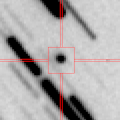
|
Now it is 16.1 mag (Nov. 12, Purple Mountain Observatory, XuYi Station). It stays 16 mag for a while. It stays observable in good condition.
Date(TT) R.A. (2000) Decl. Delta r Elong. m1 Best Time(A, h)
Nov. 15 3 17.71 24 58.6 1.443 2.429 173 16.3 23:38 ( 0, 80)
Nov. 22 3 1.97 19 41.6 1.413 2.390 168 16.2 22:54 ( 0, 74)
|

|
Now it is 16.4 mag (Nov. 10, Ken-ichi Kadota). It stays 16 mag for a while. It stays observable in good condition.
Date(TT) R.A. (2000) Decl. Delta r Elong. m1 Best Time(A, h)
Nov. 15 8 57.58 -12 0.8 6.487 6.588 91 16.2 5:07 (355, 43)
Nov. 22 8 58.36 -12 5.4 6.389 6.592 97 16.2 4:55 ( 0, 43)
|

|
Now it is 16.0 mag (Nov. 10, Ken-ichi Kadota). Fading slowly. In the Northern Hemisphere, it stays observable in good condition. In the Southern Hemisphere, it will be getting lower gradually after this, and it will be unobservable in February.
Date(TT) R.A. (2000) Decl. Delta r Elong. m1 Best Time(A, h)
Nov. 15 22 42.87 -7 29.8 2.358 2.809 106 16.4 19:05 ( 0, 48)
Nov. 22 22 46.53 -6 41.0 2.451 2.811 100 16.5 18:41 ( 0, 49)
|
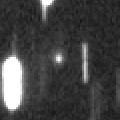
|
Now it is 16.7 mag (Nov. 12, ATLAS-MLO, Mauna Loa). It stays 17 mag for a while. In the Northern Hemisphere, it stays observable in good condition. In the Southern Hemisphere, it will be getting lower gradually after this, and it will be unobservable in February.
Date(TT) R.A. (2000) Decl. Delta r Elong. m1 Best Time(A, h)
Nov. 15 20 53.83 -12 26.8 1.968 2.042 79 16.4 18:22 ( 21, 40)
Nov. 22 21 6.24 -11 32.3 2.032 2.033 76 16.4 18:19 ( 25, 40)
|

|
It stays 17 mag for a while. It locates somewhat low in the Northern Hemisphere. But it will become high in winter. In the Southern Hemisphere, it is not observable now, but it will appear in December.
Date(TT) R.A. (2000) Decl. Delta r Elong. m1 Best Time(A, h)
Nov. 15 13 21.70 -1 26.8 2.563 1.824 33 16.5 5:07 (283, 16)
Nov. 22 13 39.63 -2 48.3 2.530 1.827 36 16.4 5:12 (287, 18)
|
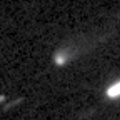
|
Now it is 16.2 mag (Oct. 27, J. Tapioles). It stays 17 mag for a while. It will be unobservable in January.
Date(TT) R.A. (2000) Decl. Delta r Elong. m1 Best Time(A, h)
Nov. 15 19 38.33 -29 3.9 3.404 3.021 59 16.5 18:22 ( 32, 18)
Nov. 22 19 48.96 -28 33.7 3.492 3.030 54 16.5 18:19 ( 35, 17)
|

|
Now it is 16.3 mag (Oct. 26, Andrew Pearce). It will fade out rapidly after this. It will be fainter than 18 mag in January. It stays observable in good condition.
Date(TT) R.A. (2000) Decl. Delta r Elong. m1 Best Time(A, h)
Nov. 15 3 33.35 2 32.7 1.787 2.750 163 16.5 23:54 ( 0, 58)
Nov. 22 3 27.13 2 36.2 1.826 2.781 161 16.7 23:20 ( 0, 58)
|

|
Now it is 16.5 mag (Oct. 23, Ken-ichi Kadota). It stays 17 mag for a while. It locates somewhat low in the Northern Hemisphere. But it will become high in winter. In the Southern Hemisphere, it will never be observable after this.
Date(TT) R.A. (2000) Decl. Delta r Elong. m1 Best Time(A, h)
Nov. 15 15 55.07 63 26.1 4.487 4.460 82 16.6 18:22 (149, 30)
Nov. 22 16 17.66 63 22.8 4.476 4.475 83 16.6 18:19 (149, 30)
|

|
Now it is 16.8 mag (Nov. 2, ATLAS-MLO, Mauna Loa). It stays 17 mag for a while. In the Northern Hemisphere, it stays observable in good condition. It stays extremely low in the Southern Hemisphere.
Date(TT) R.A. (2000) Decl. Delta r Elong. m1 Best Time(A, h)
Nov. 15 5 7.53 52 48.1 3.032 3.840 139 16.6 1:33 (180, 72)
Nov. 22 5 2.41 53 17.1 2.994 3.837 143 16.6 1:01 (180, 72)
|

|
Now it is 16.6 mag (Nov. 3, Andrew Pearce). It stays 17 mag for a while. In the Northern Hemisphere, it stays observable in good condition. In the Southern Hemisphere, it will be getting lower gradually.
Date(TT) R.A. (2000) Decl. Delta r Elong. m1 Best Time(A, h)
Nov. 15 22 31.26 -15 44.6 1.580 2.019 101 16.7 18:54 ( 0, 39)
Nov. 22 22 38.28 -14 5.7 1.632 1.998 96 16.7 18:33 ( 0, 41)
|

|
It brightened very rapidly, and it became brighter than expected. Now it is 16.8 mag (Nov. 11, ATLAS South Africa). Fading slowly. It will be fainter than 18 mag in February. In the Northern Hemisphere, it stays observable in good condition. In the Southern Hemisphere, it will be getting lower gradually.
Date(TT) R.A. (2000) Decl. Delta r Elong. m1 Best Time(A, h)
Nov. 15 0 17.68 -5 59.0 2.766 3.472 128 16.7 20:39 ( 0, 49)
Nov. 22 0 17.41 -5 49.4 2.859 3.482 121 16.8 20:11 ( 0, 49)
|

|
Now it is 16.6 mag (Nov. 11, Ken-ichi Kadota). It stays 17 mag for a while. In the Northern Hemisphere, it stays observable in good condition. In the Southern Hemisphere, it will be getting higher gradually.
Date(TT) R.A. (2000) Decl. Delta r Elong. m1 Best Time(A, h)
Nov. 15 10 34.23 -0 14.8 2.669 2.552 72 16.8 5:07 (318, 46)
Nov. 22 10 42.33 -1 27.8 2.600 2.567 77 16.7 5:12 (327, 48)
|

|
Now it is 16.9 mag (Nov. 10, ATLAS-HKO, Haleakala). It stays 17 mag for a while. In the Northern Hemisphere, it stays observable in good condition. It locates somewhat low in the Southern Hemisphere.
Date(TT) R.A. (2000) Decl. Delta r Elong. m1 Best Time(A, h)
Nov. 15 10 45.42 19 45.9 2.303 2.301 77 16.9 5:07 (291, 59)
Nov. 22 10 54.62 19 48.0 2.255 2.340 82 16.8 5:12 (299, 63)
|

|
Now it is 16.9 mag (Nov. 10, ATLAS-MLO, Mauna Loa). It stays 17 mag for a while. In the Northern Hemisphere, it stays observable in good condition. In the Southern Hemisphere, it is not observable now.
Date(TT) R.A. (2000) Decl. Delta r Elong. m1 Best Time(A, h)
Nov. 15 11 14.76 73 0.3 3.755 4.042 99 16.9 5:07 (196, 48)
Nov. 22 11 7.87 74 11.1 3.656 4.014 104 16.9 5:12 (191, 49)
|

|
Now it is 16.9 mag (Oct. 3, ATLAS-MLO, Mauna Loa). It stays 17 mag for a while. In the Northern Hemisphere, it stays observable in good condition. In the Southern Hemisphere, it will never be observable after this.
Date(TT) R.A. (2000) Decl. Delta r Elong. m1 Best Time(A, h)
Nov. 15 11 5.30 84 9.4 4.742 5.100 105 16.9 5:07 (185, 40)
Nov. 22 12 7.96 85 6.9 4.716 5.096 107 16.9 5:12 (184, 39)
|
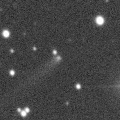
|
Now it is 16.9 mag (July 13, Taras Prystavski). It stays 17 mag for a while. It locates somewhat low in the Northern Hemisphere. But it will become high in spring. In the Southern Hemisphere, it stays observable in good condition.
Date(TT) R.A. (2000) Decl. Delta r Elong. m1 Best Time(A, h)
Nov. 15 11 2.81 -23 52.9 6.048 5.616 59 16.9 5:07 (325, 22)
Nov. 22 11 1.87 -24 8.5 5.965 5.636 66 16.9 5:12 (333, 26)
|
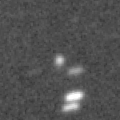
|
Brightening rapidly. It is expected to brighten up to 13 mag from 2027 to 2028. Now it is 16.0 mag (Nov. 1, Yukihiro Sugiyama). It stays 17 mag for a while. In the Northern Hemisphere, it stays observable in good condition. In the Southern Hemisphere, it will be unobservable in December.
Date(TT) R.A. (2000) Decl. Delta r Elong. m1 Best Time(A, h)
Nov. 15 21 29.26 21 34.8 6.862 7.078 98 16.9 18:22 ( 29, 75)
Nov. 22 21 28.56 21 21.0 6.925 7.039 92 16.9 18:19 ( 46, 72)
|
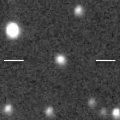
|
Although it is around 20 mag usually, now it is bright in outburst. Now it is 17.2 mag (Nov. 11, ATLAS-HKO, Haleakala). It stays 17 mag for a while. In the Northern Hemisphere, it stays observable in good condition. In the Southern Hemisphere, it will be unobservable in March.
Date(TT) R.A. (2000) Decl. Delta r Elong. m1 Best Time(A, h)
Nov. 15 2 56.83 38 21.2 7.908 8.841 159 17.0 23:18 (180, 87)
Nov. 22 2 54.06 38 12.3 7.906 8.831 158 17.0 22:48 (180, 87)
|

|
Now it is 18.4 mag (Nov. 11, ATLAS Chile). It stays 17 mag for a while. It locates somewhat low in the Northern Hemisphere. In the Southern Hemisphere, it stays observable in good condition.
Date(TT) R.A. (2000) Decl. Delta r Elong. m1 Best Time(A, h)
Nov. 15 9 49.19 -24 12.4 4.595 4.465 76 17.0 5:07 (343, 29)
Nov. 22 9 52.30 -25 24.8 4.516 4.468 80 17.0 5:12 (351, 29)
|
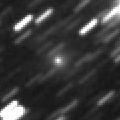
|
Very far object. Now it is 16.6 mag (Oct. 19, ATLAS Chile). It stays 17 mag for a while. In the Northern Hemisphere, it will be unobservable in December. In the Southern Hemisphere, it stays observable in good condition.
Date(TT) R.A. (2000) Decl. Delta r Elong. m1 Best Time(A, h)
Nov. 15 0 15.91 -55 32.2 10.866 11.021 96 17.1 20:37 ( 0, 0)
Nov. 22 0 12.73 -54 57.1 10.955 11.034 91 17.1 20:07 ( 0, 0)
|

|
It brightened up to 12.1 mag in early summer (June 10, Taras Prystavski). Now it is 16.9 mag (Nov. 1, Ken-ichi Kadota). Fading gradually. It will be fainter than 18 mag in January. It stays observable in good condition.
Date(TT) R.A. (2000) Decl. Delta r Elong. m1 Best Time(A, h)
Nov. 15 9 14.24 12 24.9 2.027 2.336 95 17.1 5:07 (340, 66)
Nov. 22 9 17.06 12 31.5 1.988 2.393 101 17.3 5:12 (359, 67)
|
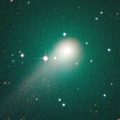
|
It was observed at 9-10 mag for a long time in 2023. It is fading very slowly. Now it is 16.9 mag (Sept. 29, ATLAS South Africa). It stays 18 mag for a while. In the Northern Hemisphere, it will never be observable after this. In the Southern Hemisphere, it will be getting lower gradually. But it will be getting higher again after January.
Date(TT) R.A. (2000) Decl. Delta r Elong. m1 Best Time(A, h)
Nov. 15 19 1.19 -67 6.1 9.189 8.735 59 17.3 18:22 ( 17,-17)
Nov. 22 19 4.78 -66 39.5 9.300 8.785 55 17.4 18:19 ( 19,-18)
|
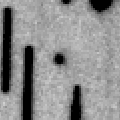
|
Now it is 17.6 mag (Oct. 28, Francois Kugel). Fading slowly. It will be fainter than 18 mag in December. In the Northern Hemisphere, it will be getting lower gradually. In the Southern Hemisphere, it will never be observable after this.
Date(TT) R.A. (2000) Decl. Delta r Elong. m1 Best Time(A, h)
Nov. 15 18 43.08 47 2.3 1.899 1.978 79 17.4 18:22 (123, 52)
Nov. 22 18 46.15 42 26.4 1.993 1.975 74 17.5 18:19 (117, 47)
|

|
It brightened up to 8 mag from 2022 summer to 2023 spring. Now it is 17.5 mag (Nov. 7, Alfons Diepvens). It stays 18 mag for a while. In the Northern Hemisphere, it stays observable in good condition. It locates somewhat low in the Southern Hemisphere.
Date(TT) R.A. (2000) Decl. Delta r Elong. m1 Best Time(A, h)
Nov. 15 6 9.78 29 48.4 9.190 9.967 139 17.4 2:35 ( 0, 85)
Nov. 22 6 6.87 30 0.3 9.169 10.016 147 17.4 2:04 ( 0, 85)
|
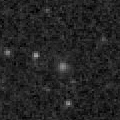
|
It is expected to brighten up to 7 mag in 2026 April. Now it is 17.8 mag (Nov. 7, Alfons Diepvens). It will brighten rapidly after this. It will be unobservable in February in the Northern Hemisphere, or in December in the Southern Hemisphere. But it will be observable again in March in the Northern Hemisphere. At the high light, it is observable in the low sky before the perihelion passage in the Northern Hemisphere, or after the perihelion in the Southern Hemisphere.
Date(TT) R.A. (2000) Decl. Delta r Elong. m1 Best Time(A, h)
Nov. 15 23 0.16 31 50.2 2.140 2.775 120 17.6 19:21 ( 0, 87)
Nov. 22 22 47.65 29 48.6 2.150 2.682 112 17.4 18:41 ( 0, 85)
|

|
Now it is 17.7 mag (June 26, ATLAS Chile). It stays 18 mag for a while. It stays observable in good condition.
Date(TT) R.A. (2000) Decl. Delta r Elong. m1 Best Time(A, h)
Nov. 15 9 23.95 -4 46.7 3.754 3.843 87 17.5 5:07 (344, 49)
Nov. 22 9 22.15 -4 1.8 3.647 3.861 95 17.5 5:12 (358, 51)
|

|
Now it is 17.2 mag (Oct. 26, Andrew Pearce). It stays 18 mag for a while. It stays extremely low in the Northern Hemisphere. In the Southern Hemisphere, it stays observable in good condition.
Date(TT) R.A. (2000) Decl. Delta r Elong. m1 Best Time(A, h)
Nov. 15 5 28.40 -47 24.7 8.194 8.555 108 17.5 1:53 ( 0, 8)
Nov. 22 5 22.22 -47 42.2 8.225 8.599 109 17.5 1:19 ( 0, 7)
|
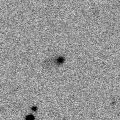
|
It continues brightening even after the perihelion passage. Now it is 17.3 mag (Oct. 28, ATLAS Chile). It stays 18 mag for a while. In the Northern Hemisphere, it will never be observable after this. In the Southern Hemisphere, it stays observable in good condition.
Date(TT) R.A. (2000) Decl. Delta r Elong. m1 Best Time(A, h)
Nov. 15 23 42.20 -65 31.4 5.794 5.820 86 17.6 20:03 ( 0,-10)
Nov. 22 23 32.55 -64 21.1 5.896 5.847 82 17.7 19:26 ( 0, -9)
|

|
Fading slowly. It will be fainter than 18 mag in December. In the Northern Hemisphere, it stays observable in good condition. It locates somewhat low in the Southern Hemisphere.
Date(TT) R.A. (2000) Decl. Delta r Elong. m1 Best Time(A, h)
Nov. 15 2 6.05 38 7.8 1.452 2.383 154 17.7 22:26 (180, 87)
Nov. 22 1 51.02 36 1.5 1.487 2.391 149 17.8 21:44 (180, 89)
|

|
Now it is 18.5 mag (Nov. 12, ATLAS South Africa). It stays 18 mag for a while. It stays observable in good condition.
Date(TT) R.A. (2000) Decl. Delta r Elong. m1 Best Time(A, h)
Nov. 15 7 10.25 6 26.3 3.559 4.179 122 17.7 3:35 ( 0, 61)
Nov. 22 7 9.02 5 59.8 3.490 4.190 129 17.7 3:06 ( 0, 61)
|
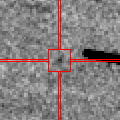
|
Now it is 17.4 mag (Oct. 17, Kunihiro Shima). Brightening slowly. In the Southern Hemisphere, it will be getting lower gradually after this, and it will be unobservable in January. It will brighten up to 15.5 mag in spring. But it is not observable around the perihelion passage.
Date(TT) R.A. (2000) Decl. Delta r Elong. m1 Best Time(A, h)
Nov. 15 21 8.18 -16 34.7 2.288 2.363 82 17.8 18:22 ( 15, 37)
Nov. 22 21 15.65 -15 33.7 2.334 2.320 76 17.7 18:19 ( 21, 37)
|

|
It brightened up to 12.1 mag in 2023 spring (May 20, 2023, Jose Guilherme de S. Aguiar). Now it is 17.4 mag (Mar. 25, ATLAS South Africa). It stays 18 mag for a while. It stays observable in good condition.
Date(TT) R.A. (2000) Decl. Delta r Elong. m1 Best Time(A, h)
Nov. 15 6 32.93 -20 36.1 7.884 8.405 118 17.7 2:57 ( 0, 34)
Nov. 22 6 29.96 -20 41.7 7.868 8.452 123 17.7 2:27 ( 0, 34)
|
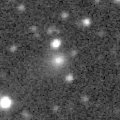
|
Now it is 17.6 mag (Oct. 20, ATLAS-MLO, Mauna Loa). It stays 18 mag for a while. It locates somewhat low.
Date(TT) R.A. (2000) Decl. Delta r Elong. m1 Best Time(A, h)
Nov. 15 20 7.87 -13 2.7 5.536 5.263 68 17.7 18:22 ( 34, 35)
Nov. 22 20 12.61 -12 39.9 5.664 5.292 63 17.8 18:19 ( 39, 33)
|

|
It will brighten up to 15 mag from autumn to winter in 2026. Now it is 18.4 mag (Nov. 1, Hidenori Nohara). Brightening slowly. In the Northern Hemisphere, it stays observable in good condition. It locates somewhat low in the Southern Hemisphere.
Date(TT) R.A. (2000) Decl. Delta r Elong. m1 Best Time(A, h)
Nov. 15 4 3.25 26 33.3 2.119 3.092 167 17.9 0:29 ( 0, 82)
Nov. 22 3 56.43 26 47.6 2.079 3.062 173 17.8 23:50 ( 0, 82)
|

|
Now it is 17.3 mag (July 14, ATLAS South Africa). It stays 18 mag for a while. It will be getting higher gradually.
Date(TT) R.A. (2000) Decl. Delta r Elong. m1 Best Time(A, h)
Nov. 15 12 7.19 -12 27.1 6.098 5.469 46 17.8 5:07 (305, 22)
Nov. 22 12 9.15 -12 13.7 6.013 5.480 53 17.8 5:12 (311, 27)
|

|
Peculiar asteroid moving along a cometary orbit. Brightening slowly. It stays observable in good condition.
Date(TT) R.A. (2000) Decl. Delta r Elong. m1 Best Time(A, h)
Nov. 15 7 59.99 18 55.8 1.907 2.483 114 18.0 4:24 ( 0, 74)
Nov. 22 8 3.93 19 16.1 1.840 2.491 120 17.9 4:01 ( 0, 74)
|

|
Now it is 17.9 mag (Oct. 3, ATLAS-MLO, Mauna Loa). It stays 18 mag for a while. It locates somewhat low in the Northern Hemisphere. In the Southern Hemisphere, it will never be observable after this.
Date(TT) R.A. (2000) Decl. Delta r Elong. m1 Best Time(A, h)
Nov. 15 17 11.32 35 52.8 5.704 5.284 60 17.9 18:22 (114, 33)
Nov. 22 17 16.98 34 44.5 5.748 5.301 58 18.0 18:19 (114, 29)
|
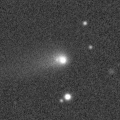
|
It brightened up to 14.7 mag in spring (Apr. 7, Taras Prystavski). Now it is 17.5 mag (Nov. 11, Francois Kugel). It stays 18 mag for a while. In the Northern Hemisphere, it stays observable in good condition. In the Southern Hemisphere, it will be getting higher gradually.
Date(TT) R.A. (2000) Decl. Delta r Elong. m1 Best Time(A, h)
Nov. 15 11 22.76 -0 44.0 4.534 4.143 60 17.9 5:07 (305, 38)
Nov. 22 11 21.50 -0 30.2 4.442 4.179 68 18.0 5:12 (314, 44)
|

|
It brightened in major outburst of 5 mag. Now it is 17.8 mag (Oct. 14, E. Cortes, B. Lutkenhoner). It stays 19 mag for a while. In the Northern Hemisphere, it will be getting lower gradually. It locates somewhat low in the Southern Hemisphere.
Date(TT) R.A. (2000) Decl. Delta r Elong. m1 Best Time(A, h)
Nov. 15 19 48.69 -3 33.0 15.401 15.044 67 18.2 18:22 ( 45, 41)
Nov. 22 19 50.02 -3 34.8 15.515 15.058 60 18.2 18:19 ( 51, 37)
|

|
It had been lost for 113 years. It will pass the perihelion on Dec. 4. It brightened up to 18 mag in outburst in 2007. Brightening slowly. In the Northern Hemisphere, it stays observable in good condition. In the Southern Hemisphere, it will be getting higher gradually.
Date(TT) R.A. (2000) Decl. Delta r Elong. m1 Best Time(A, h)
Nov. 15 10 36.05 13 26.5 1.470 1.576 76 22.3 5:07 (303, 57)
Nov. 22 10 55.12 11 37.1 1.419 1.567 79 22.3 5:12 (310, 58)
|
|
![]()
 C/2025 J1 ( Borisov )
C/2025 J1 ( Borisov ) C/2023 X2 ( Lemmon )
C/2023 X2 ( Lemmon ) C/2023 F3 ( ATLAS )
C/2023 F3 ( ATLAS ) C/2024 R4 ( PanSTARRS )
C/2024 R4 ( PanSTARRS ) C/2023 RS61 ( PanSTARRS )
C/2023 RS61 ( PanSTARRS ) 195P/Hill
195P/Hill C/2019 E3 ( ATLAS )
C/2019 E3 ( ATLAS ) 217P/LINEAR
217P/LINEAR C/2020 V2 ( ZTF )
C/2020 V2 ( ZTF ) C/2025 R1 ( ATLAS )
C/2025 R1 ( ATLAS ) C/2017 K2 ( PanSTARRS )
C/2017 K2 ( PanSTARRS ) C/2025 R3 ( PanSTARRS )
C/2025 R3 ( PanSTARRS ) C/2024 X2 ( ATLAS )
C/2024 X2 ( ATLAS ) C/2019 U5 ( PanSTARRS )
C/2019 U5 ( PanSTARRS ) C/2023 U1 ( Fuls )
C/2023 U1 ( Fuls ) (3200) Phaethon
(3200) Phaethon 276P/Vorobjov
276P/Vorobjov 93P/Lovas 1
93P/Lovas 1 C/2020 K1 ( PanSTARRS )
C/2020 K1 ( PanSTARRS ) C/2023 H1 ( PanSTARRS )
C/2023 H1 ( PanSTARRS ) 123P/West-Hartley
123P/West-Hartley C/2024 G2 ( ATLAS )
C/2024 G2 ( ATLAS ) (306173) 2010 NK83
(306173) 2010 NK83 C/2024 N3 ( Sarneczky )
C/2024 N3 ( Sarneczky ) C/2024 L5 ( ATLAS )
C/2024 L5 ( ATLAS ) C/2013 C2 ( Tenagra )
C/2013 C2 ( Tenagra ) 489P/Denning
489P/Denning![]()




























































